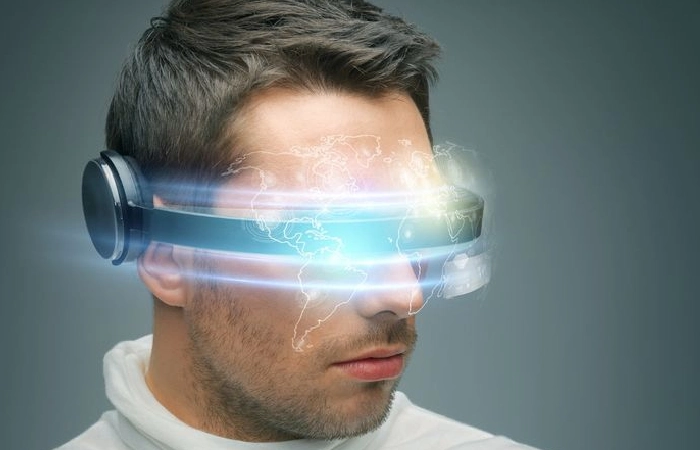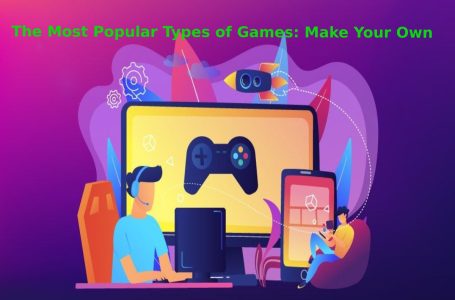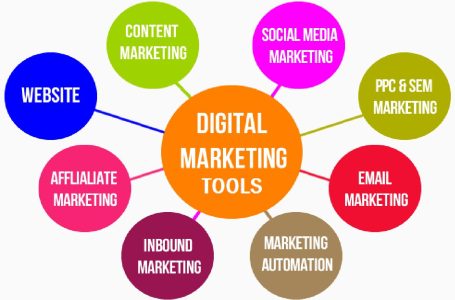Smart glasses with artificial intelligence can significantly benefit visually impaired people by helping them with daily tasks. However, they should not be substituted for normal glasses or contact lenses. Manufacturers face the challenge of making them affordable and functional and must address health risks, privacy issues, and data protection. As the industry advances, it is crucial to prioritize user well-being and regulatory compliance to ensure the safe and effective use of AI smart glasses.
Smart glasses with artificial intelligence are a valuable tool for people with poor or no vision, as they help them in various daily activities such as moving around, recognizing objects, and accessing notifications.
These glasses use artificial intelligence (AI) and machine learning (ML) to learn about objects and help visually impaired people perform different tasks.
Numerous organizations worldwide manufacture these glasses, considering them a significant advancement for the visually impaired community. However, there are doubts about its viability, accessibility and affordability.
This article explores the role of smart glasses with artificial intelligence in helping the visually impaired and addresses related issues.
What are AI smart glasses?

AI smart glasses are wearable devices designed to help the visually impaired. These glasses use AI, ML, and augmented reality (AR) technologies to provide valuable assistance. They go beyond helping with basic tasks like navigating rooms, locating objects like books, and recognizing text for reading.
They offer an enhanced AI experience, allowing users to perform advanced functions. For example, users can search for restaurants in a specific area using voice commands.
The smart glasses generate a list of restaurants and provide additional information such as reviews, menus, and food prices.
How do smart glasses with artificial intelligence work?

The device has multiple components and functions that allow it to function.
Screen
AI smart glasses display component is responsible for presenting virtual images and information to the user. This component allows users to view and interact with the glasses’ augmented reality (AR) content.
Sensors
Sensors play a crucial role in AI smart glasses, allowing them to perceive and understand the surrounding environment. Depending on the specific brand and model, these glasses may include various sensors such as cameras, microphones, gyroscopes, and accelerometers.
Smart camera and vision
The camera component of AI smart glasses plays a critical role in capturing images of the user’s environment. These images are then processed using AI, ML, and AR technologies to provide valuable information and insights to the user. By analyzing visual data, smart glasses can interpret images and extract relevant details, such as object recognition, text extraction, and scene understanding.
Information Overlay
The information overlay function of AI smart glasses provides valuable information to the user conveniently and intuitively. It allows the glasses to present relevant data and details directly in the user’s field of vision.
For example, when the user enters a library and wants to buy a book, the smart glasses can scan the books based on genre and title. They then provide the user with reviews and a brief book description. The user only has to give a voice command that the artificial intelligence system understands and executes.
Voice commands
Let’s imagine the user walking down the street, looking for a good pizzeria among the numerous options available. In this case, the user only has to send a voice command to the AI smart glasses, requesting to find a pizzeria with a score of at least 4 out of 5 and with menus that include cheese pizzas.
AI smart glasses understand and accept voice commands, using their capabilities to extract the most relevant information. They then provide the user with the best details available, ensuring they receive accurate recommendations based on their preferences.
Connectivity
AI smart glasses are designed to connect to wireless networks or use mobile data, allowing them to function as smart devices. This connectivity allows the glasses to access the Internet and retrieve information for the savvy user, whether through voice commands or other means.
Personalization
With AI and ML at their core, smart glasses can learn from user-specific behavior, preferences, and requirements. It allows the glasses to offer personalized recommendations and information, similar to a recommendation engine.
Can AI smart glasses replace regular glasses and lenses?
The fundamental differences between AI smart glasses and normal glasses or contact lenses prescribed by doctors must be highlighted.
Firstly, they are not designed to maintain or correct vision like normal glasses or contact lenses. Its goal is to help visually impaired people perform specific tasks using AI and ML technologies. It is important to understand that they are not intended to replace normal glasses but rather to provide additional help.
Secondly, unlike normal or contact lenses, AI smart glasses can usually be purchased without a prescription. However, seeking guidance and advice from a healthcare professional, such as an ophthalmologist, is advisable before incorporating the device into your routine.
Consulting with a doctor ensures that the person’s needs and concerns are addressed and that smart glasses do not negatively affect their vision or overall eye health.
Health Side Effects
Unlike regular glasses or lenses that aim to correct vision, AI smart glasses can cause visual and mental fatigue and eye strain due to prolonged proximity to Internet-enabled sensors.
The blue light emitted by the device can cause insomnia and other sleep-related problems, leading to other medical conditions. An over-reliance on smart glasses can reduce human abilities for situational awareness and minimize the use of the senses.
It is important to consider the potential health side effects of AI smart glasses compared to regular or contact lenses. Unlike traditional vision correction devices, prolonged use can cause specific problems.
Some of the side effects may be:
- Visual and mental fatigue
- eye strain
- Disturbance of sleep patterns, insomnia.
- Overreliance on smart glasses with artificial intelligence can also reduce human capabilities regarding situational awareness.
- Relying heavily on the device can decrease the use of other senses and limit the ability to perceive and respond to the environment.
Production challenges
The development of AI smart glasses presents several challenges for manufacturers despite their potential benefits to the visually impaired. The industry is still in its early stages and must address these challenges to achieve widespread and affordable production.
One of the main obstacles is the complexity of the necessary components. Designing glasses that are comfortable to wear all day and that, at the same time, incorporate the required functionalities is a significant challenge.
These features include cameras for location tracking and eye movement monitoring, large enough to cover the user’s entire field of view, powerful processors to drive the displays, computer vision AI for object identification, and efficient feeding systems.
Manufacturers strive to find a balance between affordability and functionality. If mass production levels are not reached, it will be difficult for the idea of AI smart glasses to be financially viable.
However, some companies have made progress in this field, offering high-quality devices at a more affordable cost.
Some examples of these companies are:
- Lenovo, ThinkReality A6
- Epson, Moverio BT-300
- Vuzix, M300
- Mira, Prism Pro
- Microsoft, HoloLens
The Best Smart Glasses 2024
The first smart glasses that come to everyone’s mind are the ones that Google presented as prototypes in 2011 and that, years later, went to the market under the names Oklay and Canon.
Not only has Google ventured into smart glasses, but other companies have also launched their own devices.
- Google Glass Enterprise Edition 2
- Ray-Ban Stories (with Facebook)
- Snap Spectrales 3 (Snapchat)
- Huawei X Gentle Monster EyeWaer II
- Xiaomi Smart Glasses
Do you want augmented reality glasses but are overwhelmed by the different names, models, and specifications? Below, we explain which data glasses best suit your use case.
Head Mounted Display: binocular or monocular smart glasses?
There is a distinction between hardware and software requirements regarding data glasses.
Regarding hardware, a distinction is made between monocular and binocular data glasses. Monocular data glasses have a screen in front of one eye, which displays 2D images. The head-mounted display shows 2D images.
However, with binocular data glasses, a screen is in front of both eyes, and 3D models are displayed. This is also why binocular data glasses are so prevalent in digital engineering and smart construction.
The latest monocular-based models offer the following highlights: Cameras up to 16 megapixels, built-in autofocus for sharp images, voice commands to keep your hands free while working, and battery life up to 5 hours.
Best monocular smart glasses
Realwear HMT-1: Powerful and resistant
The highlight of the HMT-1 is advanced voice recognition, which uses four digital microphones to recognize voice commands despite loud ambient noise and interprets them with one of the most advanced voice recognition AIs. It makes data glasses suitable for applications where precise instructions and exact work are important, such as machine maintenance.
Realwear is also available at Atex Certification available. Data glasses are, therefore, one of the few “hands-free” AR devices approved for use in potentially explosive atmospheres.
Light and robust smart glasses with a perfect camera for outdoor use: Vuzix M4000
The Vuzix M4000 is a pair of augmented reality glasses specially designed for production, warehouse logistics, and field service to meet Industry 4.0 requirements. With this, Vuzix competes with Google and its smart glasses. Like Google’s data glasses, the Vuzix M4000 has an excellent camera that takes videos in 4K resolution and photos with 12.8 MP. In addition, the Vuzix 4000 is one of the most robust smart glasses insured against drops from a height of 2 meters and has an IP67 certification, so the data glasses also pass the resistance test in bad outdoor areas. Time. Weighing only 190 grams, these smart glasses are light and comfortable.
The best augmented reality binocular glasses
Your second screen to wear as Android data glasses: Moverio BT-40
The Moverio BT-40 Binocular Data Glasses create a virtual workplace to work more efficiently on the go. It extends the screen of your laptop, smartphone, or tablet or creates a second screen. It protects your data from prying eyes and allows you to work comfortably. A modern OLED display will enable you to work without fatigue, even for long periods.
The most advanced spatial representation for education, modeling, and simulation with Microsoft HoloLens 2
Microsoft’s HoloLens 2 is Microsoft’s attempt to enter the augmented reality market. And with great success. The second iteration of HoloLens offers users binocular smart glasses with one of the best spatial representations on the market, recognizing two objects or surfaces simultaneously. It is beneficial for modeling 3D objects, training,g, and simulations. HoloLens 2 is controlled with gestures or a virtual keyboard.
Data glasses: Areas of application
Head-mounted displays didn’t start in the professional sector but in the consumer sector. Large companies have been experimenting with VR and AR glasses in the gaming and media space for a long time.
In industry, use in remote maintenance is a trendy field of application. After all, the biggest problem with remote maintenance is that the technical service employee always has to work from the perspective of a third party. Instead, with smart glasses, the service technician sees through the eyes of the on-site employee. The use of smart glasses also offers advantages in logistics. Shipping giant DHL, for example, uses smart glasses to speed up the removal of goods. Data glasses are also increasingly used to train employees in the use of equipment and procedures. For example, Boeing accelerated cable production by equipping employees with smart glasses that display all work instructions and can be accessed hands-free.
Conclusion
Smart glasses with artificial intelligence are a valuable offering for people with visual impairments, but it is important to note that they cannot replace normal glasses or contact lenses. The industry is still in its early stages, with a few manufacturers attempting to produce the device for the market.
However, the challenge lies in balancing production costs to make these glasses affordable without compromising quality.
As AI smart glasses become more widespread, their potential health risks, privacy issues, and data confidentiality must be critically analyzed.
As smart devices, they consume a significant amount of user data, which raises important considerations. It is essential that smart glasses manufacturers proactively address these issues and ensure users’ privacy and data are protected.
Smart devices that rely on data collection are subject to numerous laws and regulations, such as Europe’s General Data Protection Regulation (GDPR).
Compliance with these regulations is crucial, and manufacturers must adhere to the legal and ethical frameworks to protect user rights and maintain data security.
Considering these factors is vital as the industry advances, ensuring that AI smart glasses deliver the intended benefits while upholding privacy, security, and compliance with relevant regulations.





